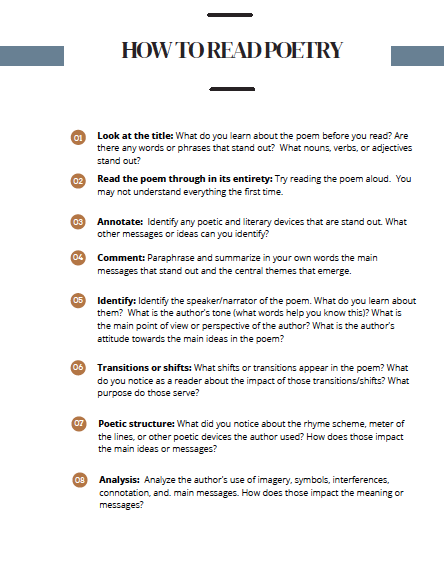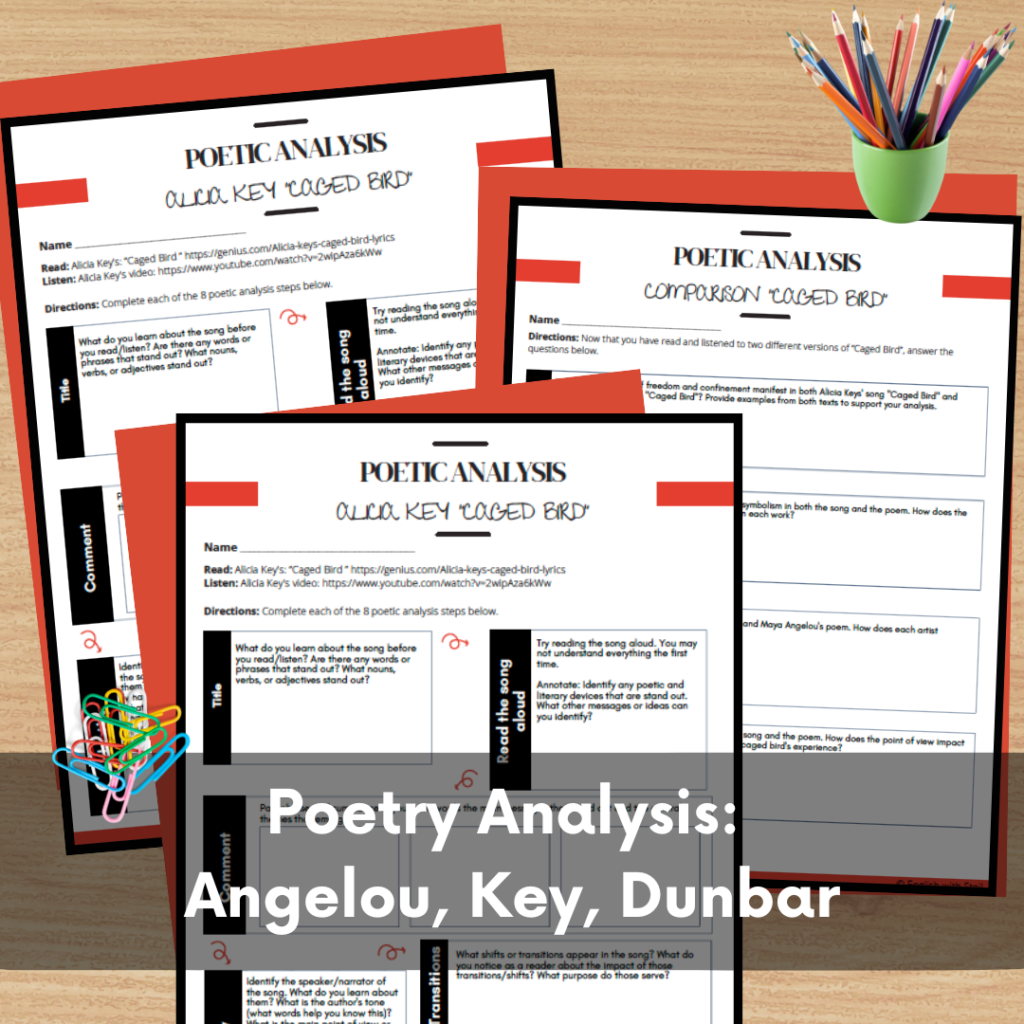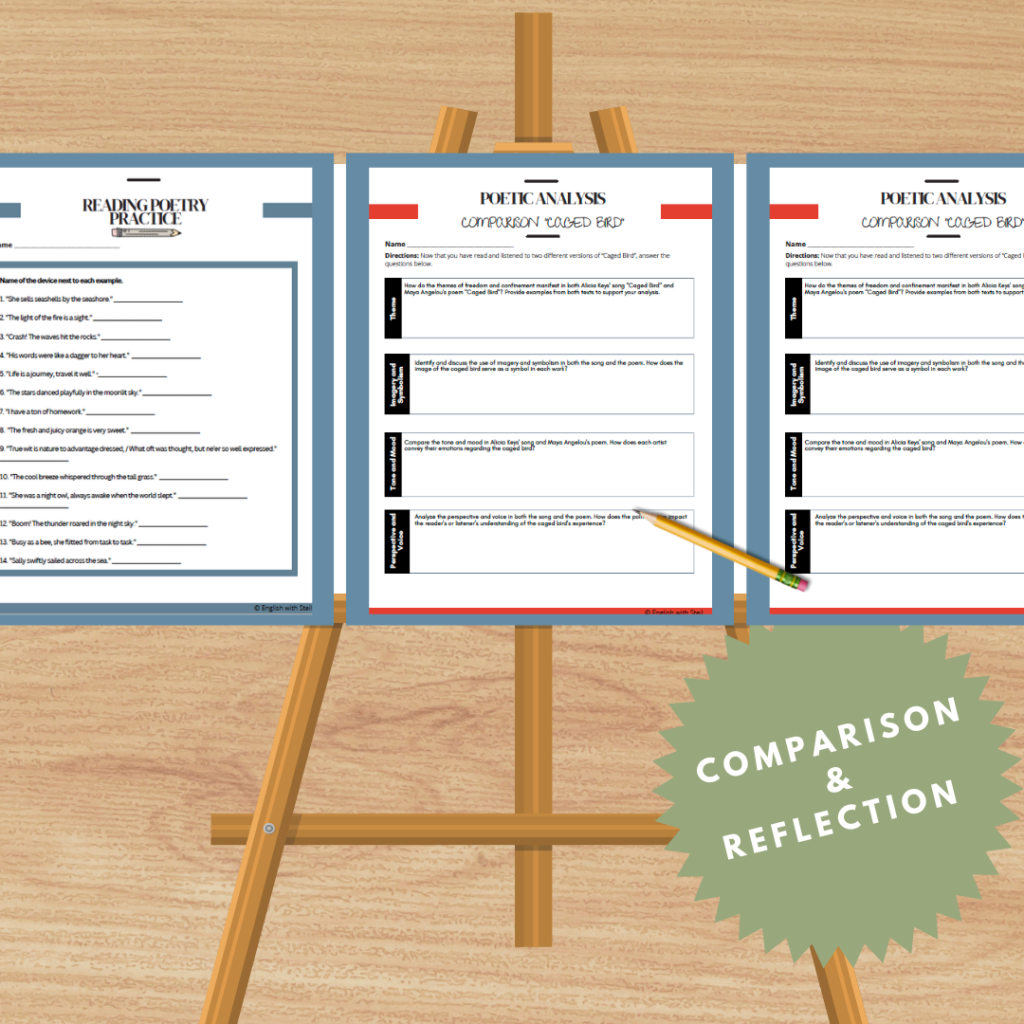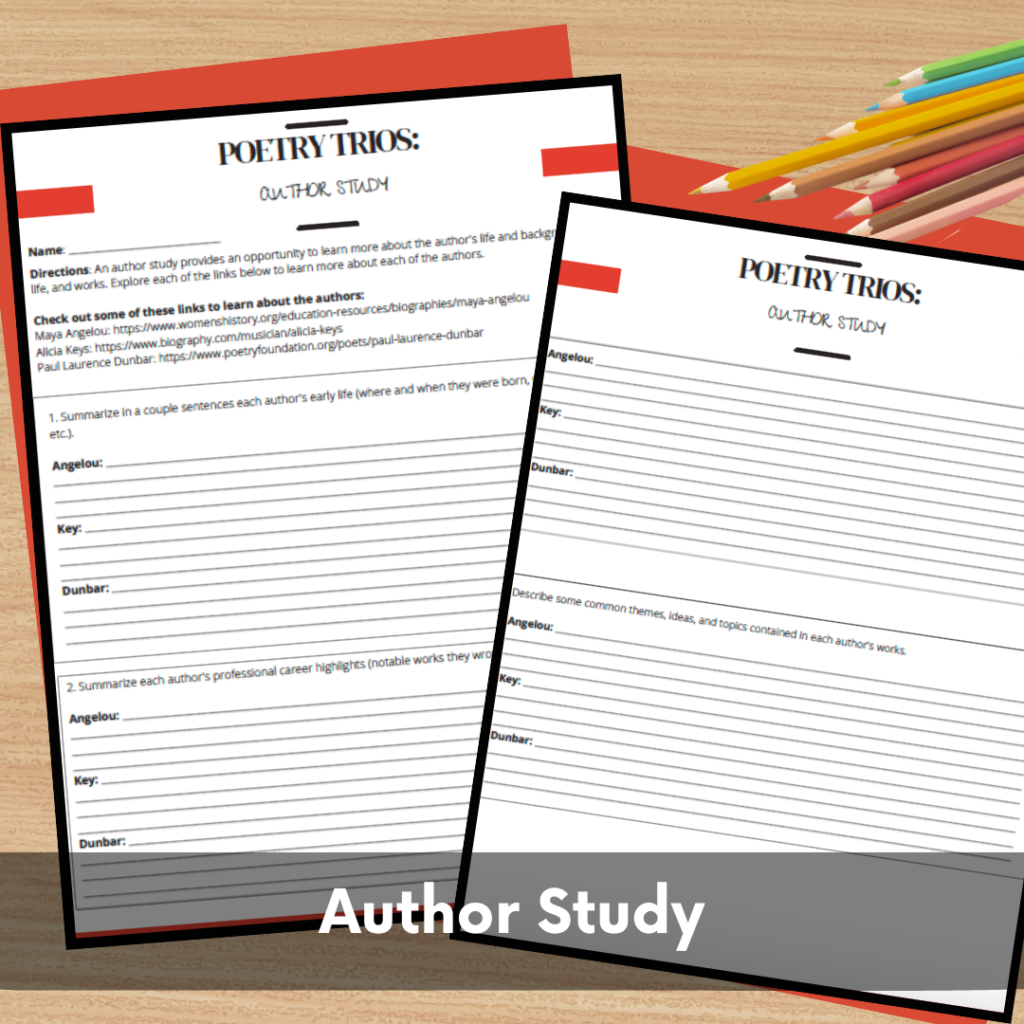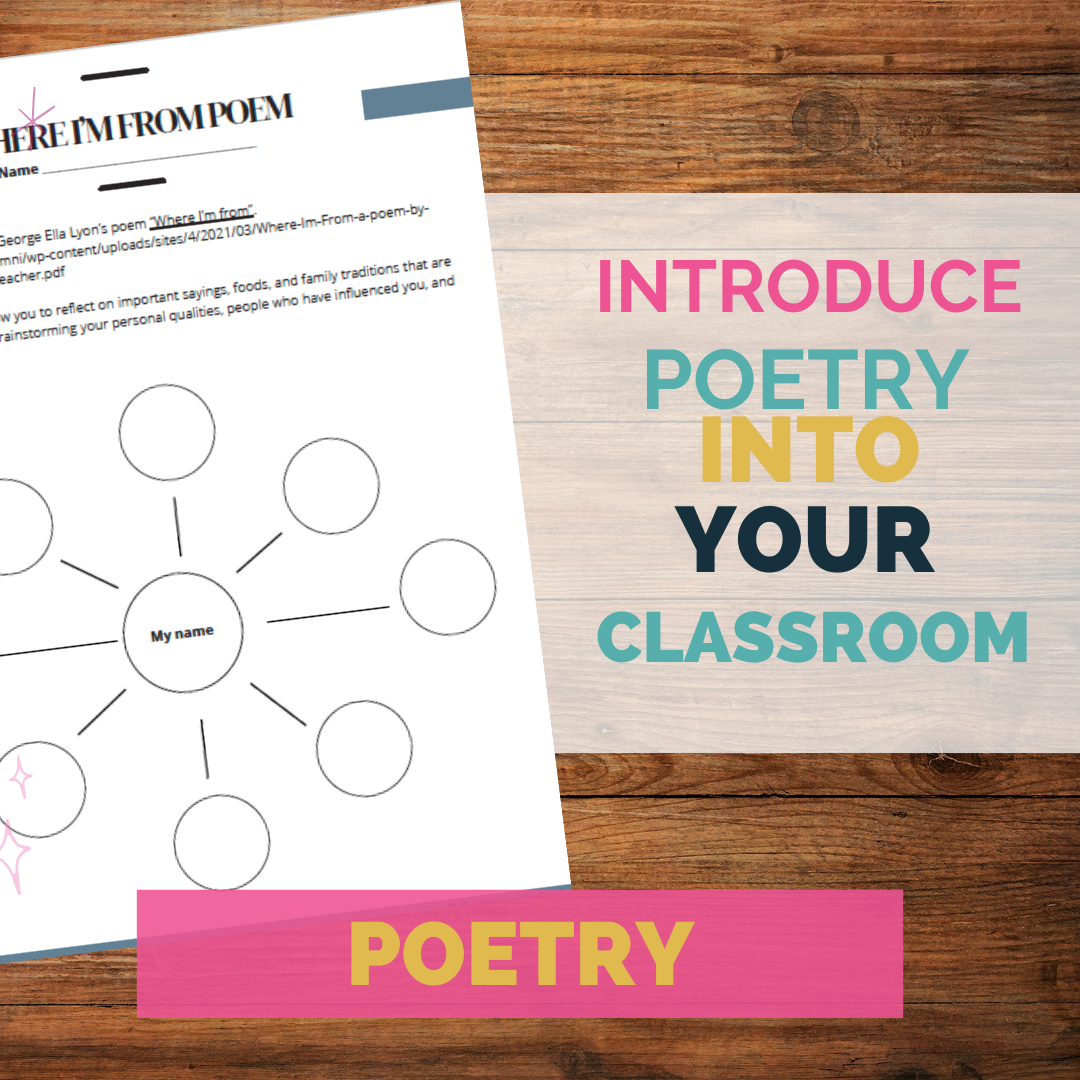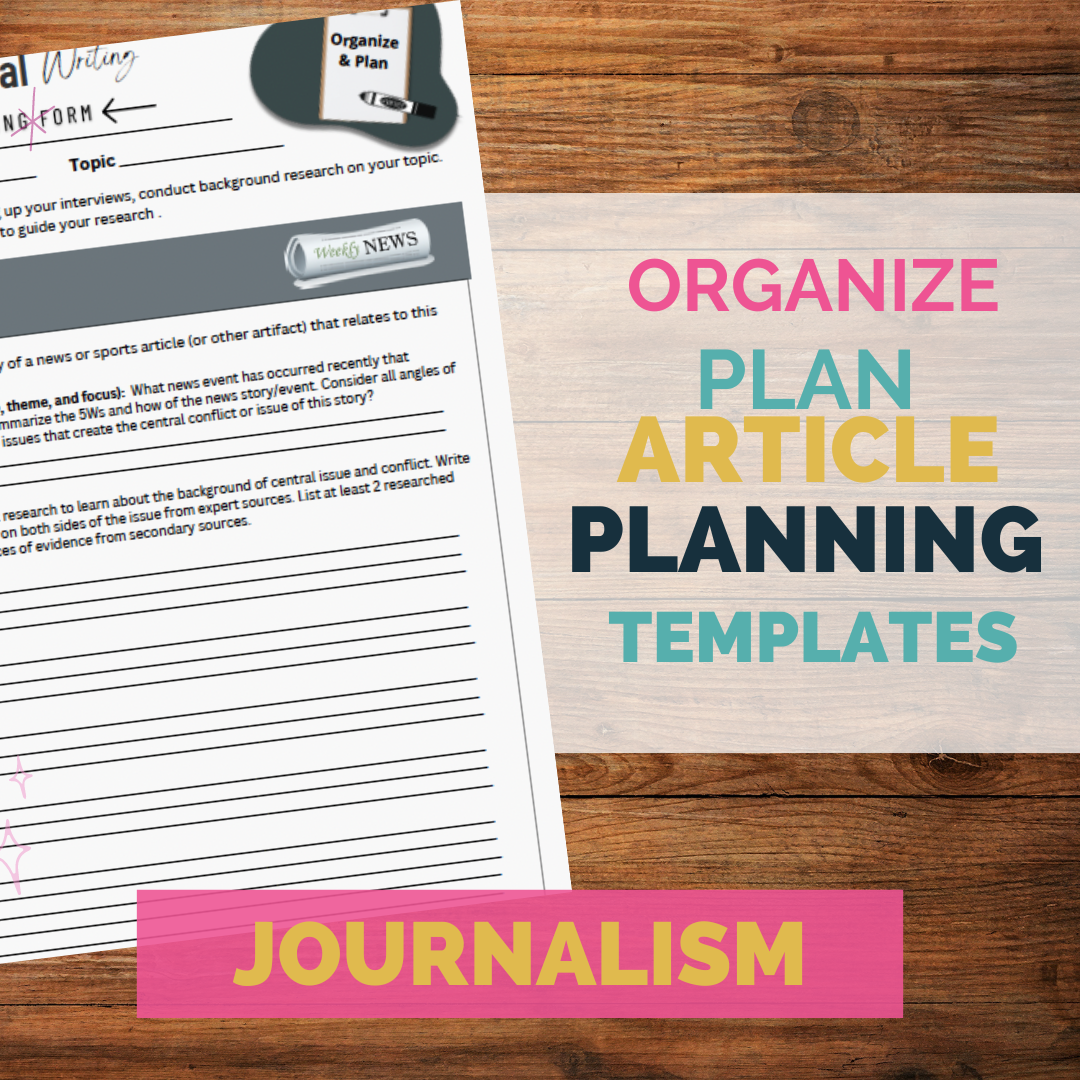Hey fellow teachers!
We all know that introducing poetry in the classroom can be a bit tricky, especially when you have a few reluctant learners in the mix. But don’t worry! I’ve discovered some fantastic ways to get even the most hesitant students excited about poetry. Let’s dive into some tips, tricks, and resources that have worked wonders in my classroom.
Start with High-Interest Activities
One of the best ways to grab your students’ attention is to start with activities that are super engaging. I’ve put together a poetry pack that’s filled with high-interest writing activities designed to show your budding poets how to write a variety of poems. From blackout poetry to creating poems about everyday items, these activities are sure to spark their creativity.
Three poets I find accessible for students are Maya Angelou, Alice Walker, and Paul Laurence Dunbar. These poets offer rich, diverse perspectives that can deeply engage our students.
Maya Angelou
Background: Maya Angelou was an American poet, memoirist, and civil rights activist. Born in 1928, she gained international acclaim with her autobiography, I Know Why the Caged Bird Sings. Her poetry often explores themes of identity, family, and racism, and she is known for her powerful and inspirational voice.
Analyzing Poems:
- Theme Identification: Have students identify and discuss themes in Angelou’s poems such as resilience, freedom, and social justice. For instance, “Still I Rise” is a great poem to explore themes of empowerment and defiance.
- Voice and Tone: Discuss how Angelou’s voice and tone convey strength and determination. Ask students to compare her tone in different poems.
- Imagery and Symbolism: Analyze how Angelou uses imagery and symbolism to convey deeper meanings. For example, the metaphor of a bird in “Caged Bird” symbolizes the struggle for freedom.
Alice Walker
Background: Alice Walker is an American novelist, short story writer, poet, and social activist. She was born in 1944 and is best known for her Pulitzer Prize-winning novel, The Color Purple. Her poetry often addresses themes of race, gender, and social justice.
Analyzing Poems:
- Cultural Context: Discuss the historical and cultural context of Walker’s work. How do her experiences and background influence her poetry?
- Narrative Style: Walker often tells stories through her poems. Analyze how she uses narrative techniques to engage the reader. Poems like “Expect Nothing” offer rich material for this.
- Emotional Impact: Explore the emotional impact of Walker’s poetry. Ask students to reflect on their own responses and what emotions the poems evoke.
Paul Laurence Dunbar
Background: Paul Laurence Dunbar was an American poet, novelist, and playwright of the late 19th and early 20th centuries. Born in 1872, he was one of the first African-American poets to gain national recognition. His work often reflects the experiences of African-Americans in the post-Civil War United States.
Analyzing Poems:
- Dialect and Language: Discuss Dunbar’s use of dialect in his poetry. How does it contribute to the authenticity and impact of his work? Poems like “We Wear the Mask” provide a good starting point.
- Historical Perspective: Explore the historical context of Dunbar’s poetry. How do his poems reflect the social and racial issues of his time?
- Symbolism and Themes: Analyze the symbolism and themes in Dunbar’s poems. For example, “Sympathy” uses the metaphor of a caged bird to explore themes of oppression and longing for freedom.
Ideas for Analyzing Poems
Close Reading:
- Have students do a close reading of a selected poem. Encourage them to annotate the text, noting any literary devices, interesting word choices, and their initial reactions.
Group Discussions:
- Facilitate group discussions where students can share their interpretations and insights. This can help them see different perspectives and deepen their understanding.
Creative Responses:
- Ask students to write their own poems in response to a poem by Angelou, Walker, or Dunbar. This can help them connect personally with the material.
Comparative Analysis:
- Have students compare and contrast poems by the three poets. What common themes do they find? How do the poets’ styles and approaches differ?
Historical Context Research:
- Assign students to research the historical context of each poet’s work. How does understanding the time period help them appreciate the poems more deeply?
Multimedia Projects:
- Encourage students to create multimedia projects that explore a poem’s themes, imagery, and impact. This could include videos, presentations, or digital art.
Poetry Readings:
- Organize a poetry reading session where students read aloud poems by Angelou, Walker, and Dunbar. Discuss how hearing the poems can alter their perception and understanding.

Final Thoughts
Teaching the works of Maya Angelou, Alice Walker, and Paul Laurence Dunbar offers a rich opportunity to explore themes of race, identity, and social justice with your students. By combining historical context, close reading, and creative activities, you can bring these notable poets to life in your classroom. Let’s inspire our students to appreciate the power of poetry and the voices that have shaped it!
Check out these resources from my fellow teacher authors
How to Teach Poetry When You’re Short on Time by Secondary Sara
National Poetry Month: A WHOLE MONTH of Poetry Activities for Secondary ELA by Bespoke ELA

